The latest works 28
since October 1, 2007
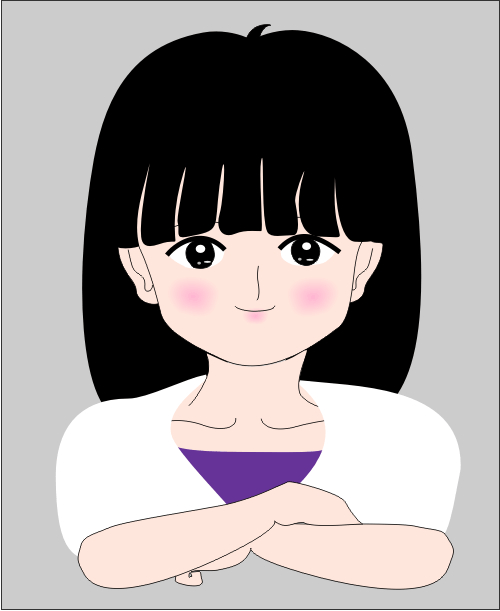
"Change of eye direction without changes of eye position or face direction"
Apparent eye direction is changed by changing only eyelid position without any other change (though it is impossible).
Copyright Akiyoshi Kitaoka 2007 (December 18)

"Overestimation of the height of a slim person"
The slimmer the person is, the taller he/she appears than he/she is. In contrast, the thicker the person is, the shorter he/she appears than he/she is.
Copyright Akiyoshi Kitaoka 2007 (December 17)
This illusion occurs in a variety of images, as shown below.

"Overestimation of the longer axis of an ellipse"
The slimmer the ellipse is, the longer its longer axis appears than it is.
Copyright Akiyoshi Kitaoka 2007 (December 17)
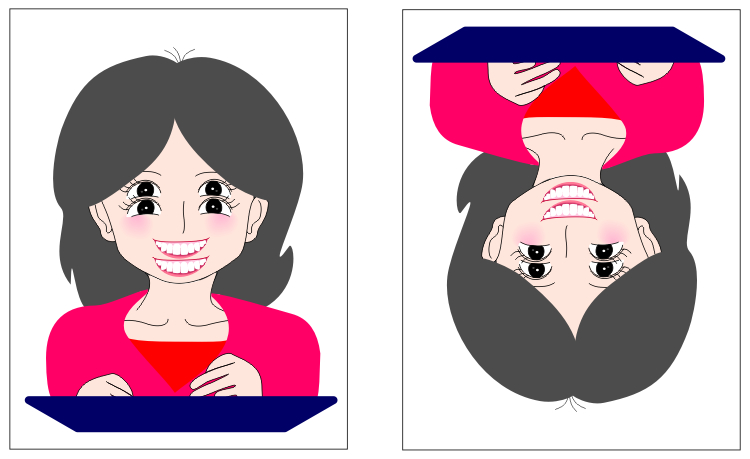
"Attenuation of the 'knocked-face' illusion in an inverted face"
The left face has four eyes and two mouths. Its appearance is unstable as if the image were knocked or wobbly. Here I tentatively call this illusion the "knocked-face" illusion, which is not what I have discovered. For those who know the correct name of this illusion or the references, please let me know. This illusion is attenuated by inversion of the face as shown in the right face. This finding suggests that this illusion strongly depends on face perception.
Copyright Akiyoshi Kitaoka 2007 (December 10)
For the Thatcher illusion, see the page of the illusion of face.
Further analysis: It does not seem that the "knocked-face" illusion occurs in
the image made up of only eyes, while it occurs in the image including
eyes and mouths at least. The contour of a face seems to enhance this illusion.
See below.
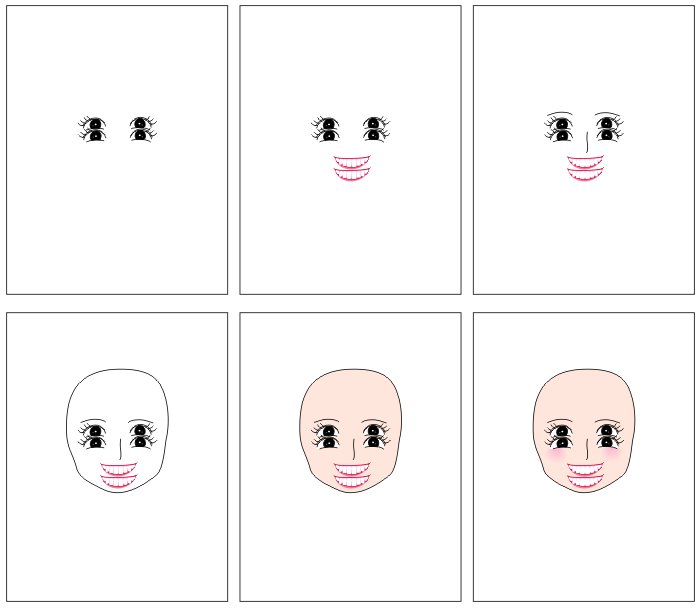
----------
One of my students reported that he had come across a web site that exhibits a number of pictures of the "knocked-face"
illusion as examples of "double vision". Double vision or diplopia is a disease that patients see a single thing double.
However, I believe that this illusion should not be called "double
vision" because visual illusion is not a disease. It would be OK if
this illusion was called "the illusion of double vision" for
example. This illusion is a new type of anomalous motion illusions such
as the Ouchi illusion and "Rotating snakes".
Anyway, I will keep searching who first discovered this illusion. If you
know, please let me know! <January 12, 2008>
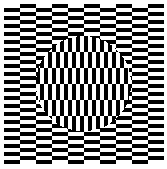 Ouchi illusion
Ouchi illusion
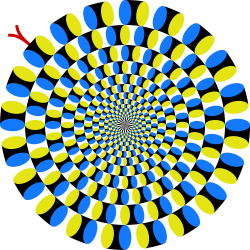 Rotating snakes (part)
Rotating snakes (part)
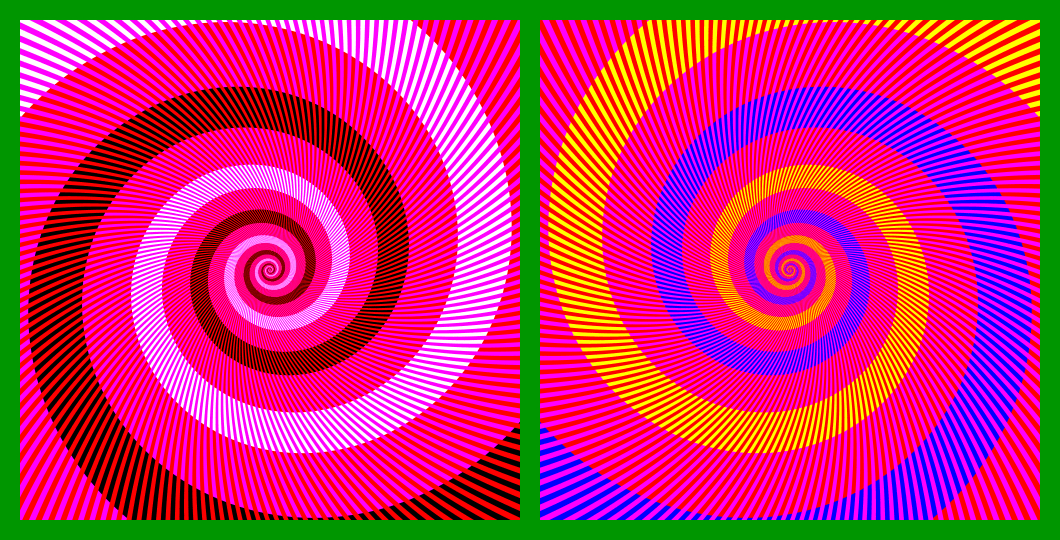
"Spiral color shift illusion"
This animation consists of two images. One ("Furin-kazan" shown just below) is presented for six seconds and the other ("Takeda Shingen" shown below) is subsequently displayed for one seconds. For each image, physically, the left half includes white or black spirals while the right one contains yellow or blue spirals. If observers fix their eyes at a constant place and see the animation for a while, the shortly presented image appears to display yellow-blue spirals in the left half or white-black spirals in the right half. This reveals enhancement of color illusion in the shortly presented image ("Takeda Shingen") induced by adaptation to the longly presented image ("Furin-kazan"). Here I would like to claim that this might be a new phenomenon that could be called "illusion aftereffect".
Copyright Akiyoshi Kitaoka 2007 (November 27)
The image shown below is presented for six seconds
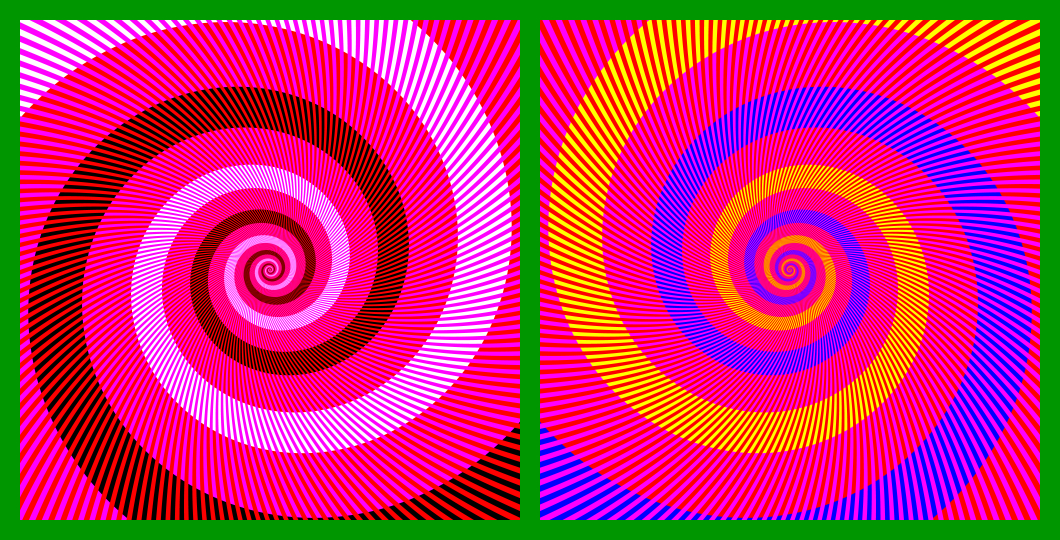
"Furin-kazan"*
*Furin-kazan is a slogan of Takeda Shingen
There appear to be white, black, yellow and blue spirals as they really are.
Copyright Akiyoshi .Kitaoka 2007 (March 12)
The image shown below is presented for one second
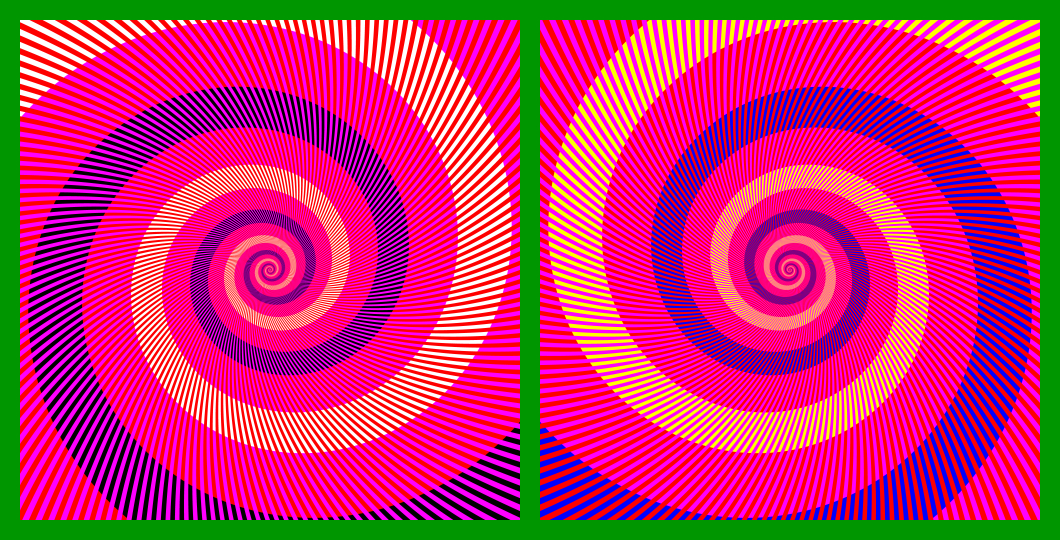
"Takeda Shingen"*
*Takeda Shingen = a sengoku-daimyo (leader in the Warring States period in the 15th and 16th century in Japan)
There appear to be pale-yellow and dark-blue spirals. Actually, in the left half, they are white (R=255, G=255, B=255) and black (R=0, G=0, B=0), respectively. On the other hand, in the right half, they are yellow (R=255, G=255, B=0) and blue (R=0, G=0, B=255), respectively.
Copyright Akiyoshi .Kitaoka 2007 (March 12)
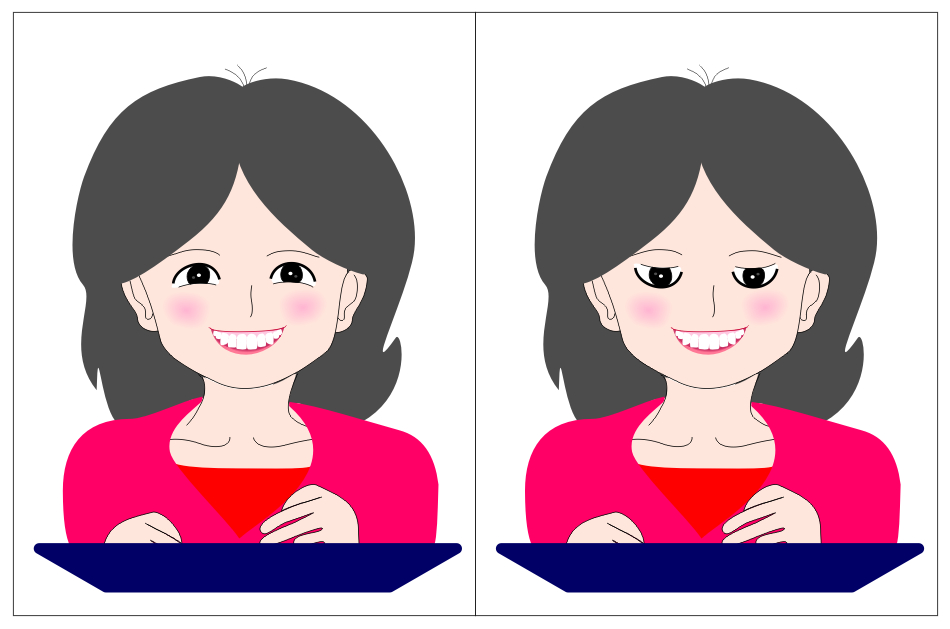
"'Thatcherized' Wollaston illusion"
The left face appears to gaze at us while the right appears to see downward, though these eyes are the same and are only inverted.
Copyright Akiyoshi Kitaoka 2007 (November 16)
For the Thatcher illusion, see the page of the illusion of face.
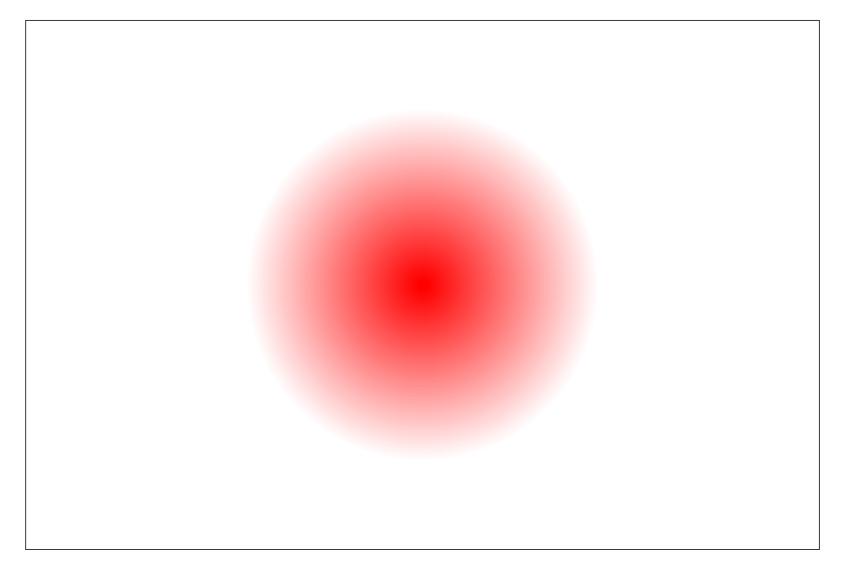
"Hinomaru illusion"*
*Hinomaru = the national flag of Japan ![]()
Illusory light-blue ring is visible at the circumference of the red circle. This illusion might possibly be the "chromatic version of the Mach band". Moreover, this effect is enhanced when the observer moves away from the image keeping their eyes on the red circle. This enhancement might depend on the negative afterimage.
Copyright Akiyoshi Kitaoka 2007 (November 9)
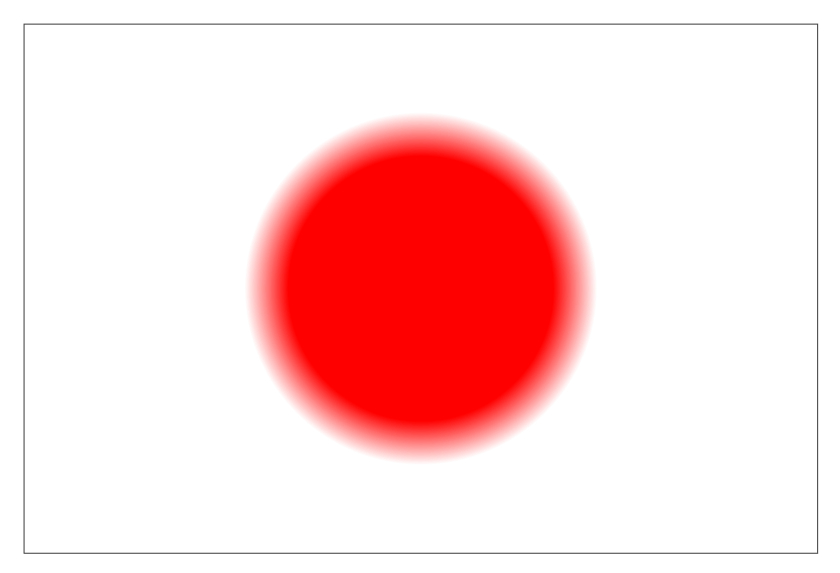
"Hinomaru illusion 2"
A red ring is visible inside the circle. This illusion also might possibly be the "chromatic version of the Mach band". Moreover, this effect is enhanced when the observer approaches the image keeping their eyes on the red circle. This enhancement might depend on the negative afterimage. For my vision, the ring appears to be tinted orange when the observer moves away from the image. The Hinomaru illusion can be observed, too.
Discovered by Akiyoshi Kitaoka 2007 (November 9)
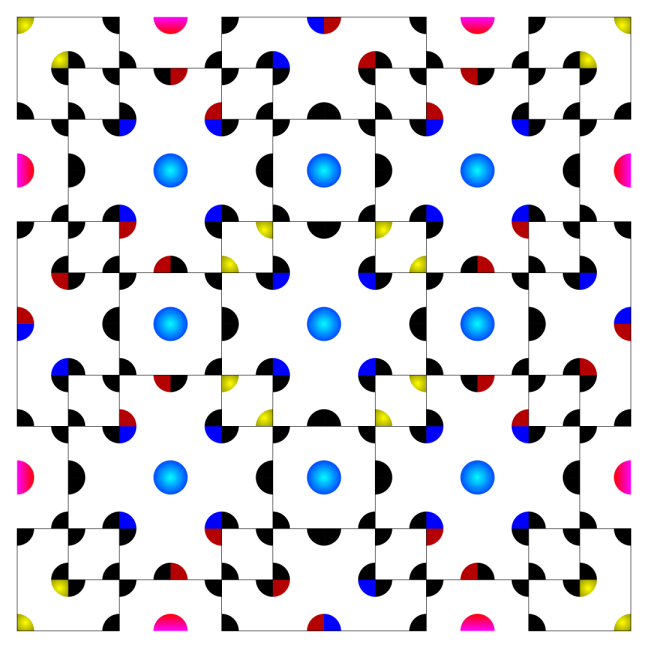
"Dice"
(A remake)
Thin lines are drawn vertically or horizontally, but they appear to be distorted. This illusion is called the checkered illusion (Kitaoka, 1998, 2007).
Copyright Akiyoshi Kitaoka 2007 (November 6)

Checkered illusion: The horizontal line appears to tilt cloclwise.
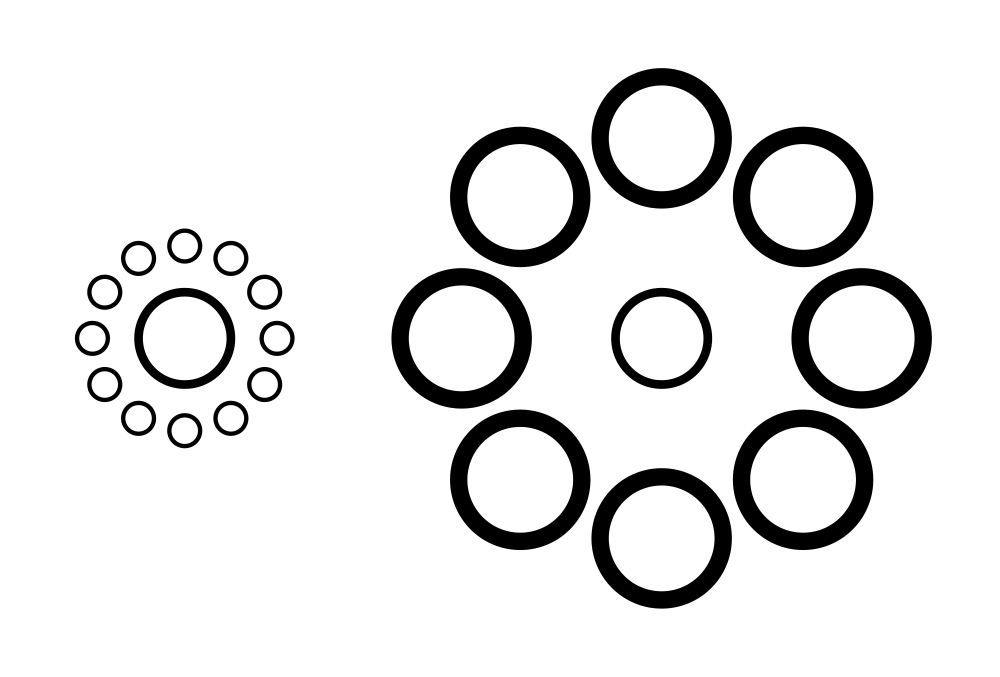
"Ebbinghaus thickness illusion"
The left circle surrounded by smaller circles with thinner contours appears to be larger than the right circle surrounded by larger circles with thicker contours, though they are physically identical. This illusion is called the Ebbinghaus size illusion, the Ebbinghaus illusion, the Titchener illusion, or Tichener circles. Moreover, there is another illusion that the contour of the left circle appears to be thicker than that of the right circle. This illusion might be novel.
Copyright Akiyoshi Kitaoka 2007 (November 3)
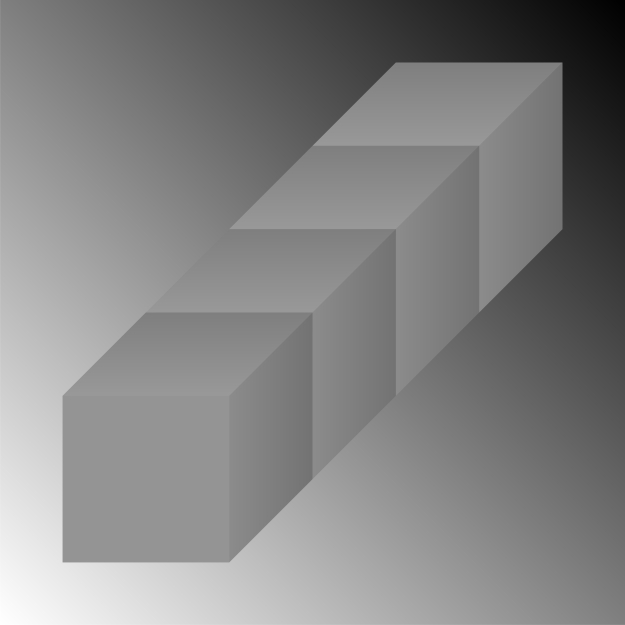
"Saikoro yokan"*
*Saikoro = dice, yokan = kind of cake
The luminance of ABCD is the same as each other or that of abcd is also the same as each other, though D appears to be lighter than A or d appears to be lighter than a. In addition, the farthest dice appears to be largest.
Copyright Akiyoshi Kitaoka 2007 (October 19)
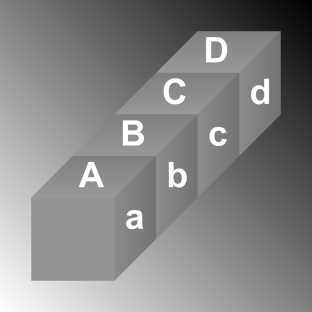
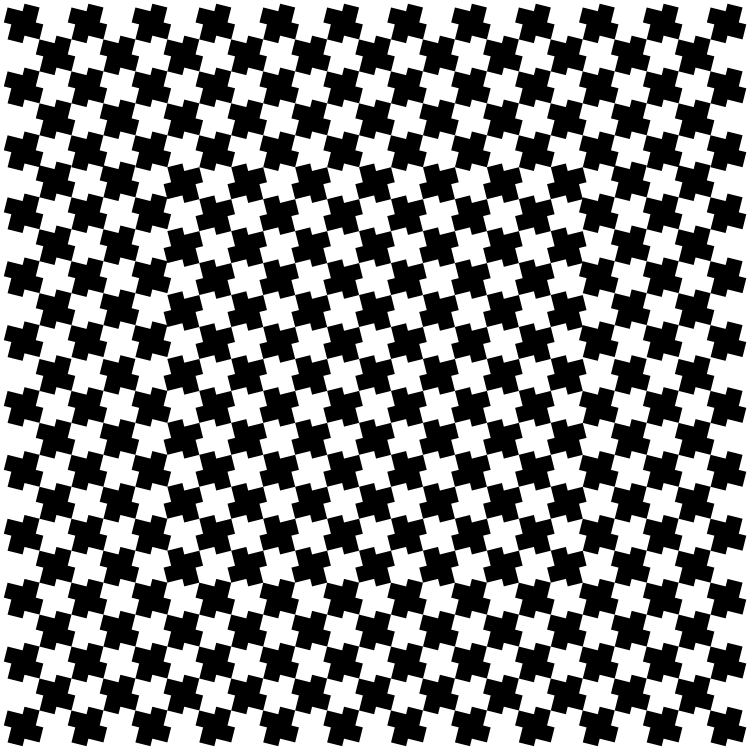
"Field of crows"
The inset apepars to move.
Copyright Akiyoshi Kitaoka 2007 (October 1)
27 The latest works (August 2007 - September 2007)
26 The latest works (June 2007 - August 2007)
25 The latest works (March 2007 - June 2007)
24 The latest works (March 2007 - March 2007)
23 The latest works (February 2007 - March 2007)
22 The latest works (December 2006 - January 2007
21 The latest works (October 2006 - November 2006)
20 The latest works (August 2006 - October 2006)
19 The latest works (July 2006 - August 2006)
18 The latest works (June 2006 - July 2006)
17 The latest works (May 2006 - June 2006)
16 The latest works (May 2006 - May 2006)
15 The latest works (April 2006 - May 2006)
14 The latest works (March 2006 - April 2006)
13 The latest works (March 2006 - March 2006)
12 The latest works (February 2006 - February 2006)
11 The latest works (February 2006 - February 2006)
10 The latest works (January 2006 - February 2006)
9 The latest works (November 2005 - December 2005)
8 The latest works (October 2005 - October 2005)
7 The latest works (September 2005 - October 2005)
6 The latest works (June 2005 - August 2005)
5 The latest works (April 2005 - June 2005)
4 The latest works (March 2005 - April 2005)
3 The latest works (June 2004 - March 2005)
2 The latest works (April 2004 - June 2004)
1 The latest works (August 2003 - May 2004)
0 The latest works (June 2002 - July 2003)